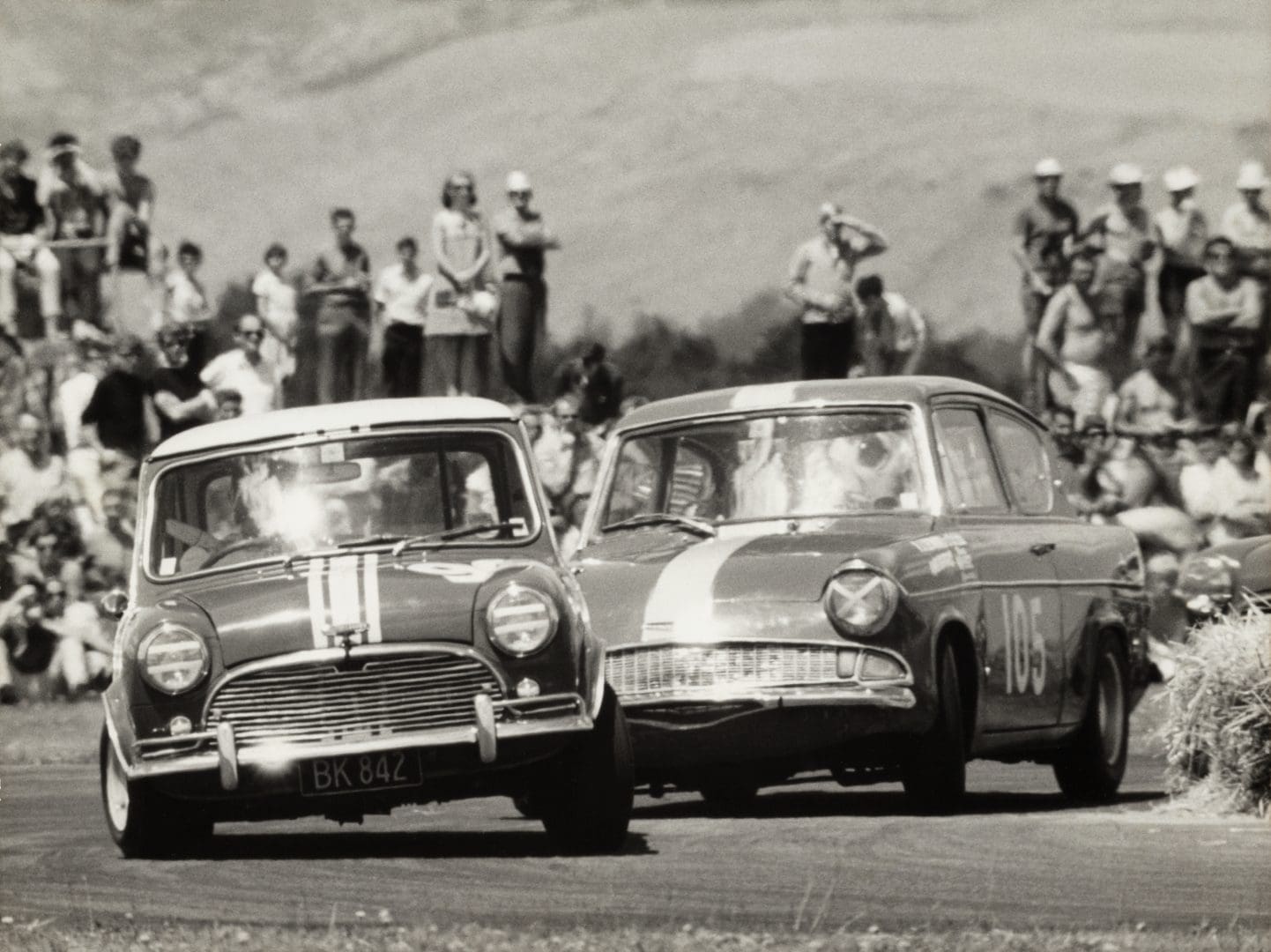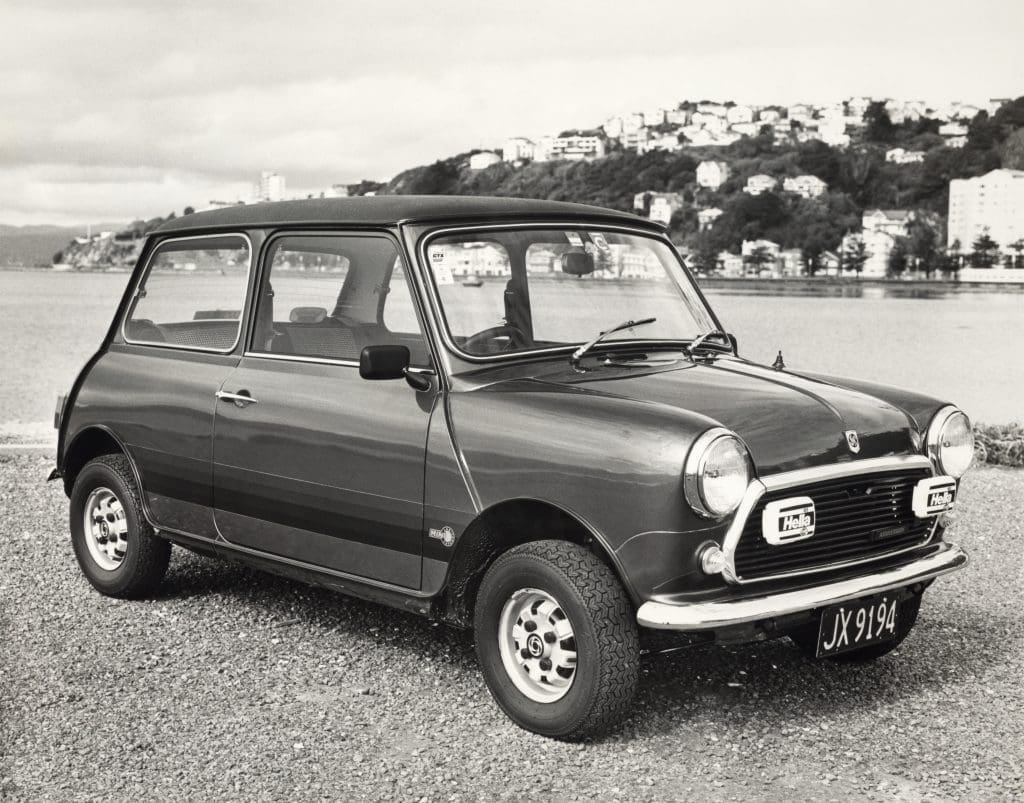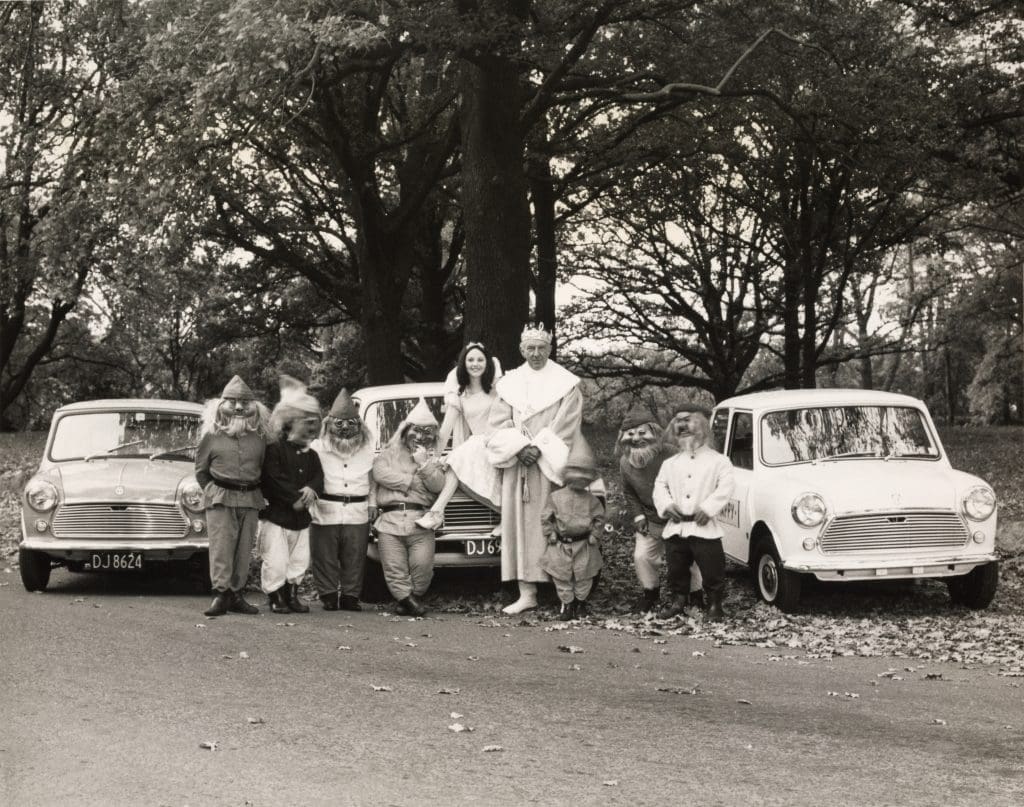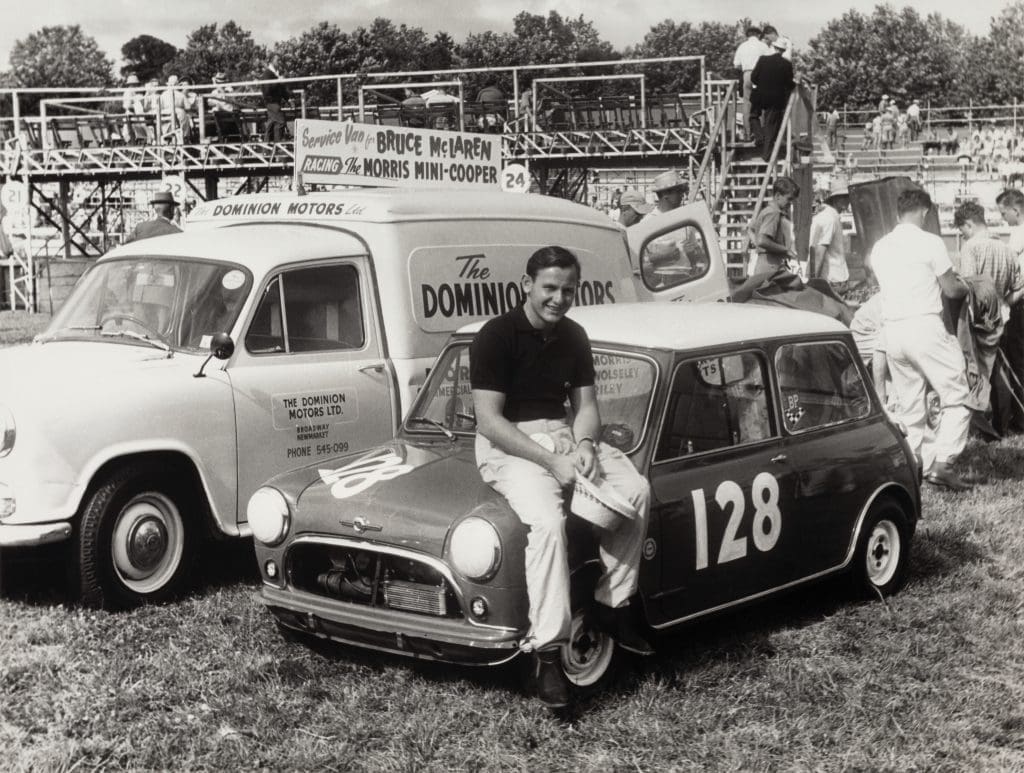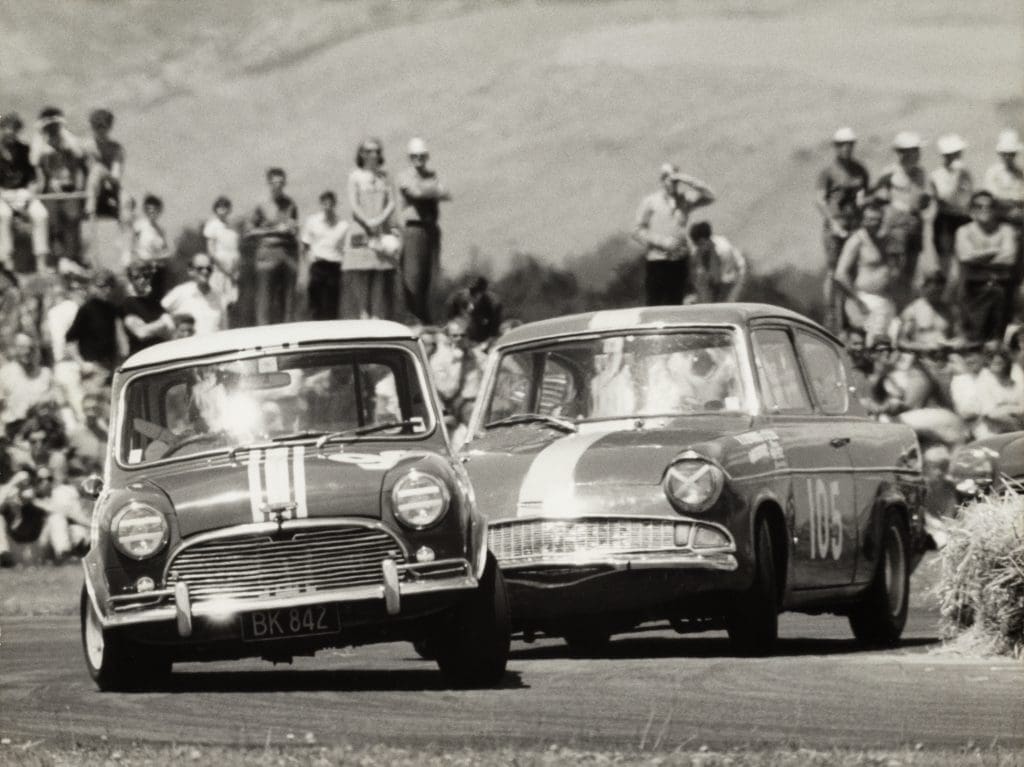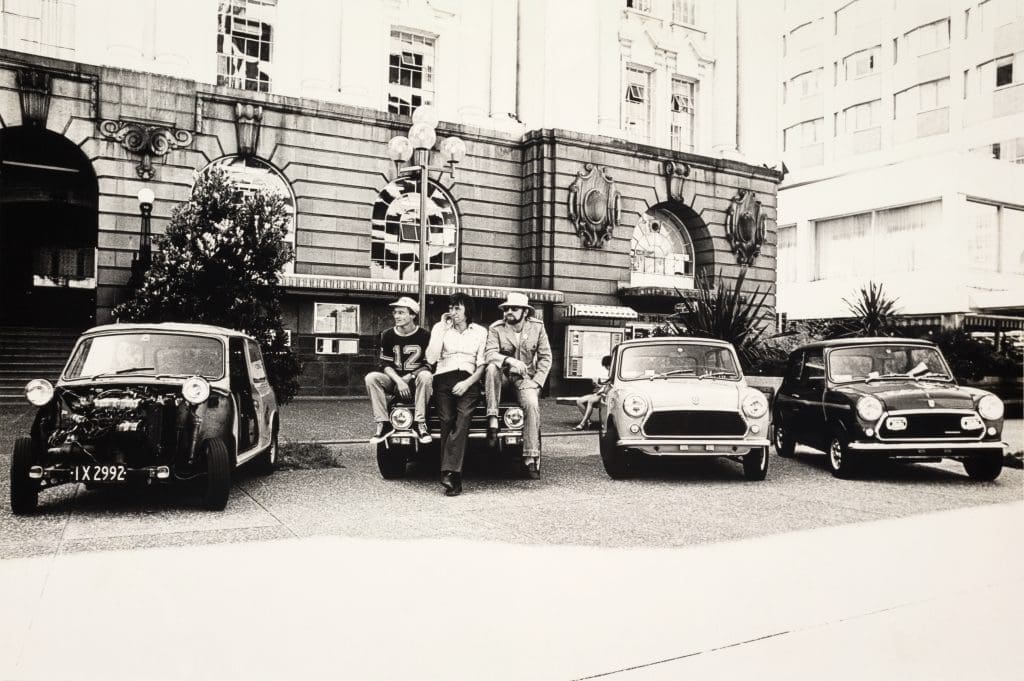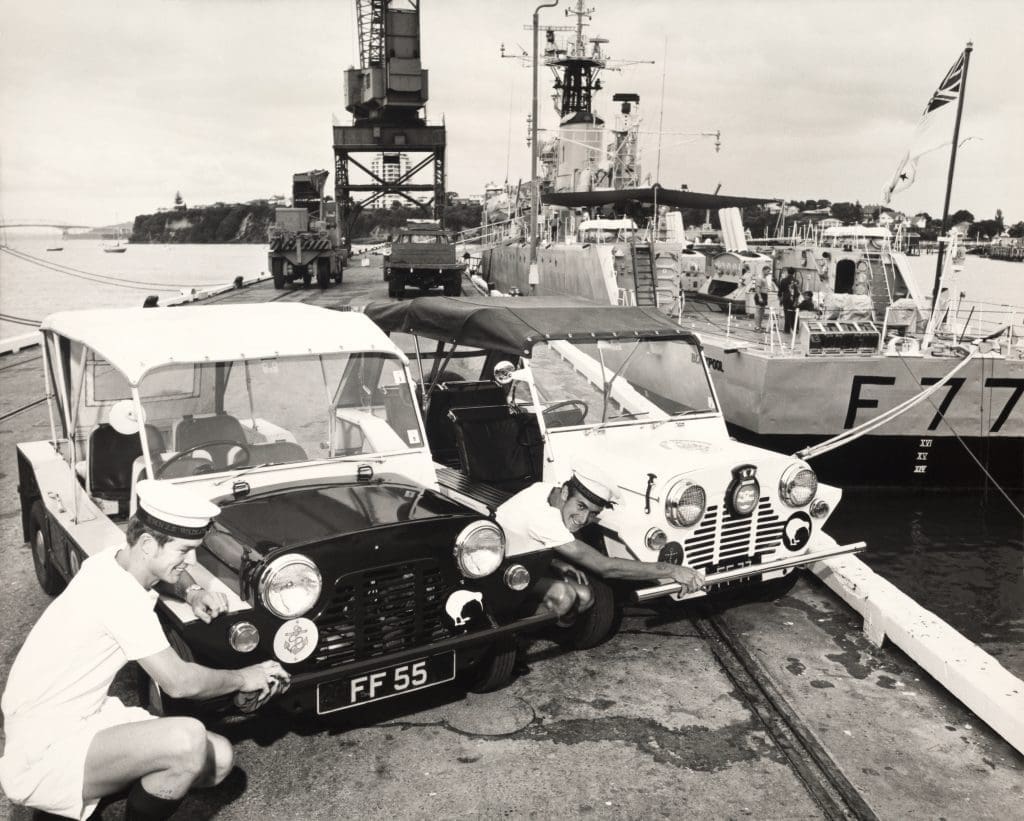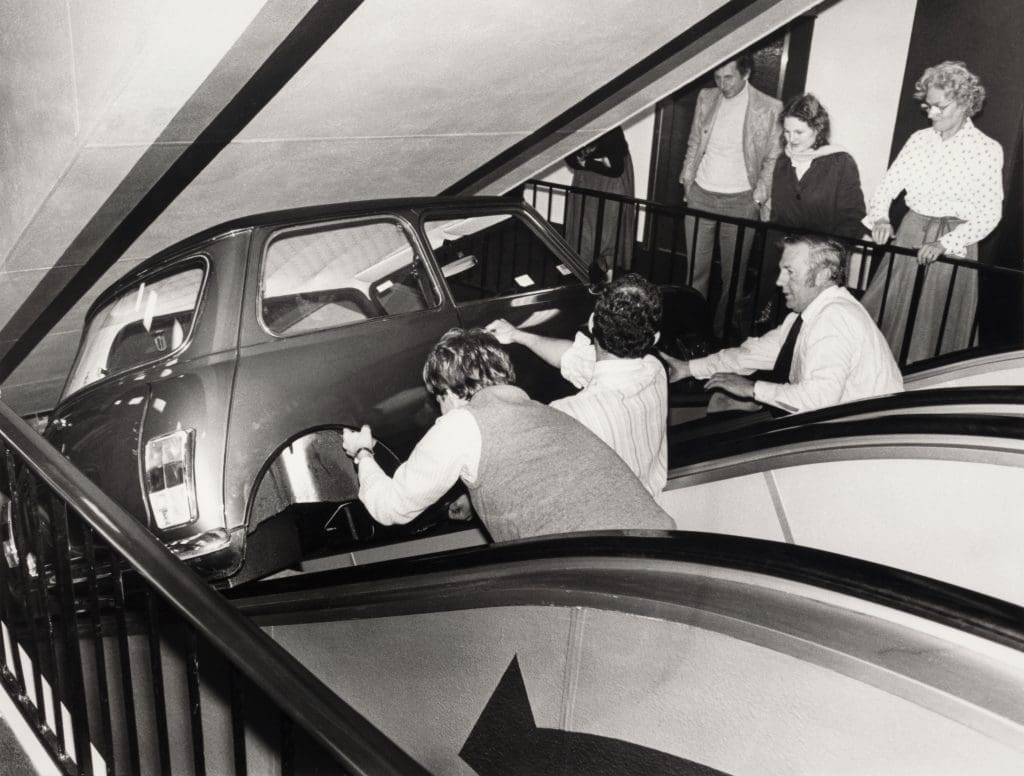Here’s How MINI Has Become A Cultural Icon
On what appears to be a stereotypically overcast day in the port city of Bristol, people are gathering from all over Europe and beyond to celebrate something they have all in common. In a time that sees people increasingly more fractured from one another, everyone can agree on at least one thing: MINIs’ are awesome. The International MINI Meeting first started in 1978 in Germany for fans of the classic MINI. Since then it’s grown in size and every five years the meeting makes its way to MINI’s homeland. This year is particularly auspicious; the world has been blessed by this tight little package for 60 years.
You might not be setting any land speed records in it, but the MINI is a style icon. It settled quickly and smoothly into our imagination and popular culture as easily as it can fit in a parking spot that has two diagonally parked utes on either side. It was a car of its time, responding to a need for a car that could handle the fuel crisis of the time and built for city driving. The original was a two door, 4 cylinder engine car by BMC, that featured branding with BMC’s other cars, like Morris Minor and Austin. However, the MINI was too distinct to live under the shadow of these other cars for long.
![]()
Six months after it’s launch, MINIs began to infest the Monte Carlo races, with six entering the rally, and another six entering private races. The fastest came in 23rd. This started to get cogs turning in the mind of driving legend John Cooper. His contributions not only to the horsepower he managed to squeeze out of the MINI, but also to its history, rings down through the MINI Cooper range to this very day.
In 1959, he set up a prototype for Roy Salvadori to race in the Italian Grand Prix in Monza. It came down to a race between it and the grunty Aston Martin DB4. In the end, the DB4 was an hour behind the nippy and tightly controlled, Cooper-prepared, classic MINI.
In 1964, the MINI Cooper S took to Monte Carlo once again and won the day with Northern Ireland’s Patrick “Paddy” Hopkirk and his co-driver Henry Liddon.
“Although the MINI was only a little family saloon, technically it had a lot of advantages,” remembered Hopkirk back in 2014. “Its front-wheel drive and front-mounted transverse engine were a great advantage, and the fact the car was smaller and the roads were ploughed, they were quite narrow, so I suppose that was an advantage. We were very lucky – the car was right, everything happened at the right time and came together at the right moment.”
![]()
About this time, the MINI appeared on the silver screen in A Shot in the Dark, one of the Pink Panther movies. It was black and had weird wicker side paneling, but this wouldn’t be its first and only appearance.
In 1969, it was the headline act of The Italian Job. Not even the ever classy Aston Martin DB4 could compete with the show stealing 1967 Austin MINI Cooper S. In fact, the producers kept the MINI despite Fiat, a major sponsor, offering Fiat 500s as getaway cars. Because are they as cool and distinctly British as the MINI? Nope.
The Italian Job showed off what’s so great about the MINI Cooper; it can fit down narrow European streets, is cost effective, looks great, and can also easily carry 136kg of gold bullion in a crazy getaway. Okay, maybe it can’t do that last part, but you get the idea.
![]()
At the end of the century, it was a time to look back at an era that had been profoundly changed by cars. Private transport was now commonplace and had changed how we worked and played. The Car of the Century was named in 1999. The winner? The ubiquitous Model T that had forged the way for the assembly line. But a close second? The MINI.
The MINI kept getting new iterations, but it wasn’t to get a proper rebirth until BMW got a hold of the marque in 2000 and soon releasing the MINI Hatch, a much more spacious and modern take on the classic.
![]()
With the new generations also came a new generation of actors to drive them, with MINIs’ getting into high speed chases once again in The Italian Job remake in 2003 with Mark Wahlberg. Although personally, this writer has more of a soft spot for the old and loved MINI in 2002’s The Bourne Identity.
BMW and Cooper remained tight, so Cooper turned out official tuning kits that wouldn’t void BMW’s warranty on the new MINI Coopers, giving the cars an extra boost of power. In 2008, they fully merged and soon the first JCW versions were rolling right out of the factory. The performance of the MINI was now pushing 211bhp
A year later, a short run of MINI-E hit the roads; an 150kW electric that was more a real world test of MINI’s electric potential. Now in 2019, a wider release is being made with the MINI Cooper SE, whose electric engine is lighter than it’s gas guzzling predecessors, meaning it has even better axle load distribution and a lower center of gravity, maintaining that control it was so famed for during the Monte Carlo rallies. It seems that we’ve come full circle. The original MINI was developed to fill a need for an economical car that didn’t use much petrol and worked in urban areas, a brief the SE fulfills beautifully.
![]()
MINI celebrated its 60 years recently with an exhibition at the Glasshouse, Morningside in November, featuring archival photos of MINI’s history in New Zealand. Below are a selection of photos that were on display at the exhibition.
To experience MINI for yourself, visit aucklandminigarage.co.nz

